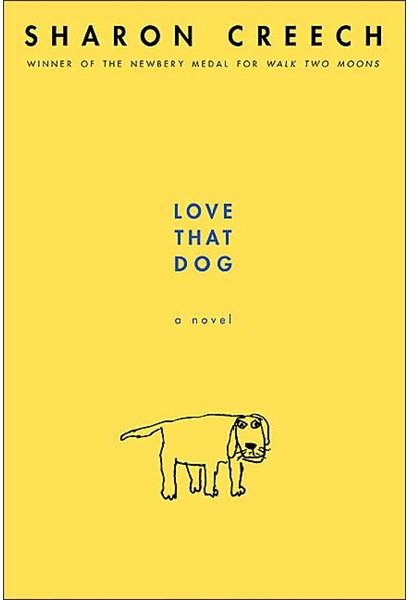"Love That Dog": Middle School Lesson - Creating an Interest in Poetry
If you took a poll in class and asked students how many enjoyed reading or writing poetry, chances are you would not have very many hands raised. Poetry is an overlooked type of literature because people generally view it as unnecessary, boring fluff.
In truth, however, poetry offers writers a compact and concentrated form of expression. All it takes is a little analysis, a little understanding of poetic elements, and a bucketful of patience to uncover the beauty within this gem of literature.
Sharon Creech’s Love That Dog offers young readers a tremendous opportunity to identify with a young writer much like themselves who does not want to write poetry, does not even understand the stuff, but recognizes something interesting in rhythm or diction or an image.
Using these activities will pique an interest in poetry within your own students. Your efforts are sure to unravel their curious minds and build confidence in their hearts.
Lesson Focus
Engage students with a journal question: How would you feel about writing a poem about “writing a poem” in class?
Guided Practice
-
Read Love That Dog together as a class.
This novel lends itself to popcorn reading, which would allow Jack’s voice to be heard through the voice of a student. -
After the class has finished reading the novel, ask students what the journal entry had to do with the novel.
-
Define the following poetic elements in class. Discuss examples:
- free verse
- imagery
- alliteration
- rhythm
- repetition
- onomatopoeia
- voice
Independent Practice
-
With students in groups, ask them to identify these poetic elements in the novel.
-
In Love That Dog, Jack has to write in class all year-long. Students will write a poem about writing a poem in class. They should jot down their thoughts about being asked to complete this assignment. The poem does not have to rhyme.
-
Review imagery. On a separate sheet of paper, students will write a list of things they smell, hear, taste, feel, and see.
-
Review onomatopoeia. Does anything in the classroom sound like it means?
-
Students will review their list of imagery and onomatopoeia and choose one or two words they think would have more meaning if they repeated the word three to four times in the same line.
-
Students will examine the first sheet of paper with the original poem about writing a poem in class. Using the imagery, onomatopoeia, and the repetitive words written on the second page, how could students combine them with the first poem to make the poem sound more poetic?
-
While students are combining words, ask them to think about the sounds the words make. Review alliteration. Could alliteration be added to any parts of the poem?
-
Students will read the poem to themselves, and then allow two or three people to read the poem. Is there any part of the revised poem they would re-write? Does any part of the poem need editing?
Assessment
After revising the poem, students will think of an object in class which they could use as a symbol (a pencil, an apple, a globe, a desk, etc.) and create a large cut out of that symbol on colored paper. Then, they will transfer the final draft of the poem onto that paper. Students should add a title and their name.
Other Love That Dog Book Activities
-

Create a classroom poetry bulletin board - post favorite poems by favorite writers and challenge students to mimic the work just like Jack did in _Love That Dog.
_
-
Sharon Creech’s novel consists of forty-seven entries. Students can perform a read aloud of each entry, one student at a time. Take the reading one step further by performing the novel as a school play with cut out images of blue car, Sky, red wheelbarrow, etc., that move about stage when the lines are read.
-
Create comic book poems. Use the imagery in a poem as an illustration guide and the poem as a basis for a comic strip.
-
Ask students to write 3-5 poems from Sky’s point of view.
-
An excellent Love That Dog book activity would be for students to create a poetic slideshow. Students can act out individual scenes from the novel and for each scene take one picture. Combine the image and the entry for a day on a Power Point slide to create a memorable telling of Creech’s story.
With a bit of preparation, these Love That Dog activities will add color and fun to your novel lessons. Reading and writing poetry, as well as reciting and expressing poetry, will allow your students to build analytical and writing skills, as well as confidence in their own abilities.
Promote the creative inspiration in students only poetry can provide.
Article Resources
Creech, Sharon. Love That Dog. Scholastic: New York, 2001.
Image Sources
https://commons.wikimedia.org/wiki/File:Labrador_jeune_chienne_assise.JPG
